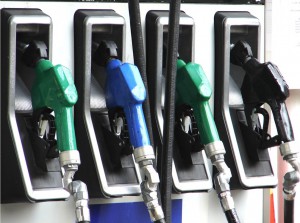The start of the summer driving season, which normally sees motorists paying more for fuel, has brought some relief from rising gasoline prices.
AAA reported that during the long holiday weekend, the national gas price average held steady for five days at $2.97 per gallon, suggesting prices may be stabilizing as we head into June. This development comes as crude oil prices start to fall following some of the highest prices in three years.
“At the start of the holiday weekend, reports indicated that OPEC may raise production levels to help ease global supply concerns. The announcement immediately brought down the price of crude – which has dropped nearly $3 per barrel since Thursday,” said Jeanette Casselano, AAA spokesperson.
“This is welcome news to motorists who have not only seen pump prices increase, on average, 16 cents since the beginning of May, but are paying the highest prices to fill up since 2014,” she said.
(U.S. new vehicle sales bloom in May. Click Here for the story.)

The consistent rise in gas prices has halted, although three more states now average more than $3 per gallon.
The drop came as Saudi Arabia, which was joined by Russia, announced it was lowering the price of the crude oil recovered from its wells. The move also indicates that Saudi Arabia had regained the initiative on pricing it had lost an American oil production soared during the past decade.
Saudi crude oil is relatively easy to recover and thus cheap to produce unlike the oil fracked in the U.S., which requires a substantial investment to produce.
In addition, while the U.S. now exports record amounts of crude oil to markets overseas, the sharp drop in oil prices in 2014 left the American oil companies doing the fracking more dependent on banks and making it more difficult to expand production in the U.S. quickly and attack Saudi Arabia’s grip on global prices.
Casselano said gas prices remain very expensive.
(Click Here for more about how gas prices continue rising in the U.S.)
With the past week, three states have been added to the list of states with a gas price average of $3 per gallon or more – making for 17 states in total. Indiana at $2.98 per gallon is just two-cents away from hitting the $3 threshold and joining Illinois at $3.11 per gallon and Michigan at $3.09.
With a 10-cent increase, Michigan has the largest week-over-week increase in the country followed by Illinois where prices went up by 7 cents. Also seeing large jumps in the region on the week with five-cent increases are: Wisconsin, Nebraska and North Dakota. All other states saw prices increase one to four cents since last Tuesday.
Rising fuel prices are also expected to have an impact on the wider economy. The increased cost of fuel is already blunting the stimulus the American economy received via the federal tax cut.
Morgan Stanley estimated that if prices remain at current levels, they would cost U.S. households an additional $38 billion this year. Using Joint Committee on Taxation data, it estimated the tax-cut bill would reduce individual taxes by about $128 billion in 2018.
(To see more about difficult sales results in April, Click Here.)
Rising fuel prices also add to inflationary pressures, making it more likely the Federal Reserve Board will raise interest rates as the year goes on.

